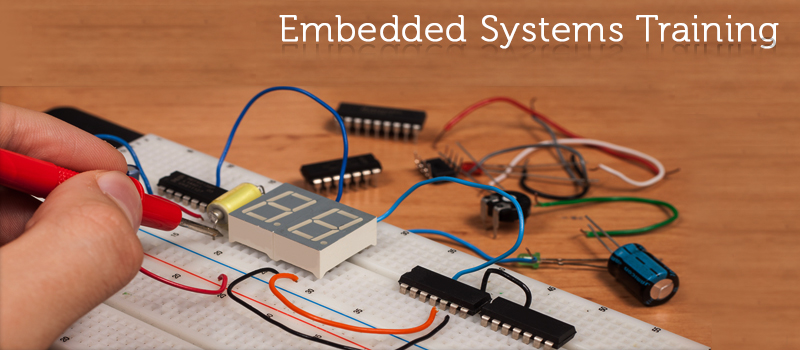Embedded systems play a very crucial role in our day-to-day life as we use them in our daily life through various mediums and used in different industries such as industrial machines, cameras, digital watches, aeroplanes, vending machines, mobile devices, toys and much more. In this article, we are going to discuss the future of embedded systems and how they will look in the coming era.
- What is an embedded system?
- How does an embedded system work?
- Work of embedded systems in the electronic industry in the coming era
- Role of Python in embedded systems
- Role of machine learning in embedded systems
- Various programming strategies make embedded systems cost-effective
- Evolution of the next generation computing
- EUV lithography
- Overall future of embedded systems
What is an Embedded System?
A combination of hardware and software designed for a particular function is called an embedded system. Embedded systems can also perform or function within a larger system and that system can be fixed or programmable. Embedded systems can be used in Industrial machines, consumer electronics, automobiles, medical equipment, cameras, digital watches, aeroplanes, vending machines, toys, mobile devices, and agricultural and processing industry devices. There are mainly four types of embedded systems-
- Standalone embedded systems-One of the main characteristics of embedded systems to function within a larger system, but the standalone variety can function independently, even they can produce outputs with a host computer.
- Mobile embedded systems-All mobile embedded systems are standalone, but all standalone embedded systems are not mobile embedded systems and mobile embedded systems are small and portable devices.
- Network embedded systems-Network embedded systems highly rely on communication with web servers with the help of wired or wireless networks to operate, and they are also called networked embedded systems.
- Real-time embedded systems-The main function of real-time embedded systems is to provide immediate results or output.
How embedded systems work?
To handle electric and mechanical interfacing these embedded and processing systems are integrated with dedicated components and these are managed by microcontrollers or digital signal processors (DSP), field-programmable gate arrays (FPGA), application-specific integrated circuits (ASIC), and GPU technology. Instructions of embedded systems are stored as read-only memory (ROM) or flash memory chips which are running with limited computer hardware resources.
Some characteristics of embedded systems
- Time-sensitive function execution-these systems are time bounded, which means that they are required to execute their intended function within a specific time frame to keep the larger system running properly.
- Frequently used for internet of things (IoT) devices-these systems refer to a network of devices that can communicate without human intervention, like a home security system.
- Microcontroller-based or microprocessor based-they get computational power with the help of integrated circuits of microcontrollers and microprocessors.
Work of embedded systems in the electronic industry in the coming era
In the electronics industry embedded electronics have an impactful role in the modem world from computers to cars, these systems are part of the machines on which we rely on a daily basis. The market or demand for electronic embedded systems will grow with our dependence on electronic devices. It also helps designers and developers by making them aware of the future of the market. With the demand for modern technologies, the future of electronic embedded systems has a good place.
Also Read, What are the Three Important Tools for Digital Marketing?
Role of Python in Embedded Systems
As we all are aware of the python language and its popularity among developers for various functions. Apart from these, this language is becoming popular among embedded systems engineers and in modern electronics and python kernels are found in many popular system architectures. Due to this diversity, python is in an ideal place to take the lead in programming embedded electronics in the next decades.
If we do surveys in universities, then we will find that python has taken a good place as a programming language and languages like C and C++ are rarely being taught in universities. The simplicity of python is its major key to becoming a popular language, even in embedded systems. As python is being used in various fields along with embedded systems, it becomes easy for developers to collaborate and develop new projects to push technology at different levels.
Role of Machine learning in Embedded Systems
From business to software development, machine learning is likely to impact many industries through embedded systems across the globe. The newest way to communicate seamlessly with the cloud is embedded microcontrollers, and they even work on less bandwidth than the previous one. The Internet of things is one of the most interesting things in the areas of engineering and technology. With the help of machine learning, hardware technology is moved one step ahead, which is making it easier to run software on microcontrollers.
Various programming strategies make embedded systems cost-effective
Programming strategies for embedded systems provide many options for functionality, cost-effectiveness and safety to designers and developers. Chances for cybersecurity breaches in electronic embedded systems are minimised or even paused and with potential security concerns, these systems market is growing rapidly and sustainably.
Evolution Of The Next-Generation Computing
One of the most revolutionary signal-processing concepts is the “Fourier Transform”. Basically, it is a mathematical function that transforms a signal from the time domain to the frequency domain. This transformation gives us the ability to understand the frequencies inside the signal and is considered a very powerful transformation.
Earlier it was not developed further due to the lack of computational tools but in today’s world, this is widely being used in image processing and signal processing in various commercial and critical systems such as RADAR and SONAR.
EUV Lithography
Lithography is said when the light source is used to print very small patterns of devices including transistors on silicon. In other words, we can say that Lithographic machines are those where hardware meets software and provides a holistic approach to the mass production of patterns on silicon. This machine has taken a big place in the industry in the past few decades.
Overall future of Embedded Systems
Embedded systems course are growing rapidly on a per-year basis as this is a major area of innovation and engineers are innovating new products and technologies across industries to increase safety and reduce cost. Even embedded systems are playing a major role in the automotive sector to develop self-driving vehicles. Demand for embedded systems is highly growing in smart home appliances and devices that are helpful in reducing or in saving energy consumption while offering convenience and various features to homeowners.
Conclusion
The growing demand for smart devices across industries opens various opportunities for embedded system developers to develop new technologies and products. It consists of a microcontroller with onboard memory and communications ports for transferring data to other devices. Apart from these, they are also used for security purposes as they enhance safety, reduce cost and offer much more facilities to consumers in the form of self-driving vehicles, electronics, communications, healthcare and smart home appliances.
It also opens various careers in different fields, and you can earn a handsome salary as an embedded system engineer. To become an embedded system engineer, one must have certified training in that from a well-established institute. If you are interested in making a career as an embedded systems engineer, then you can visit APTRON for embedded system training in Noida.




